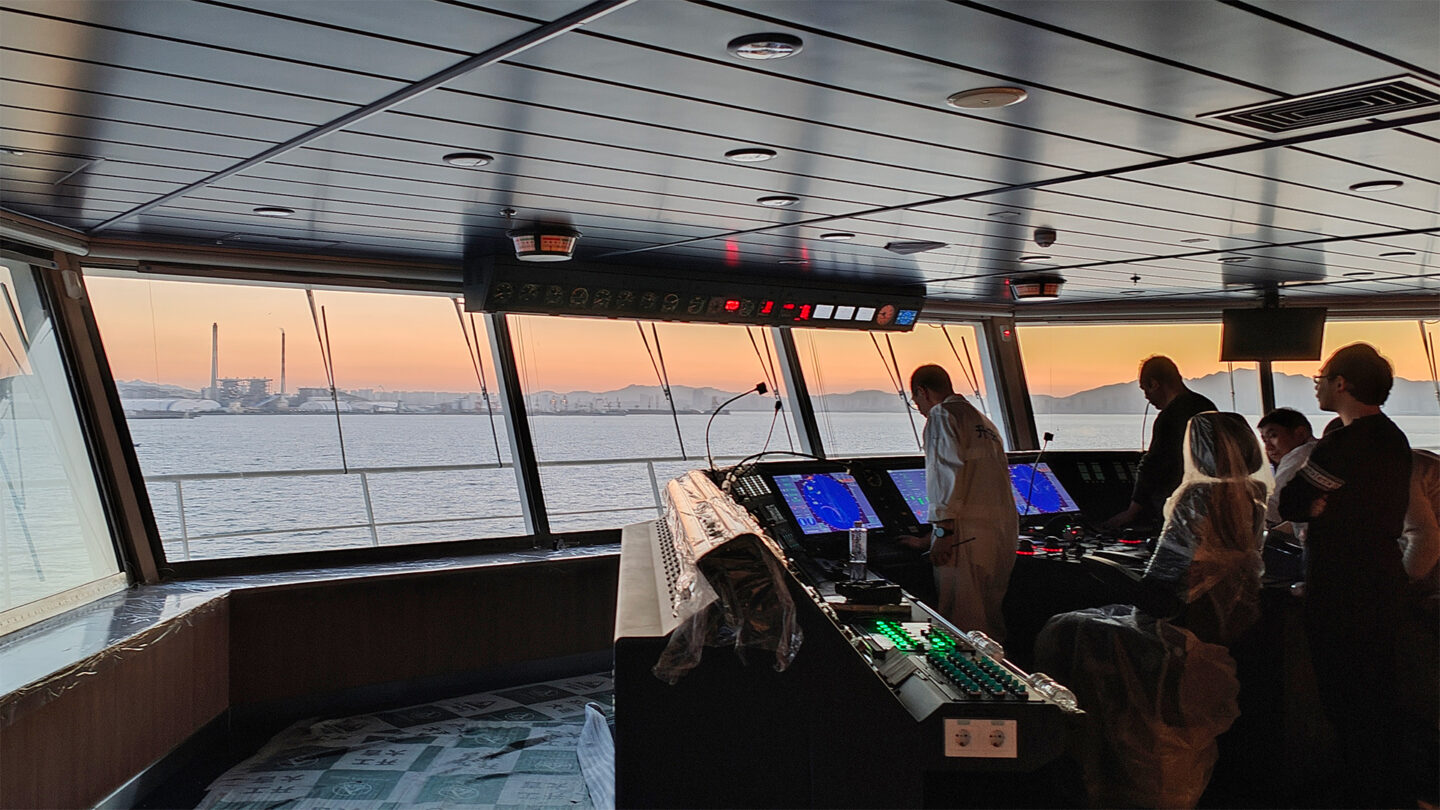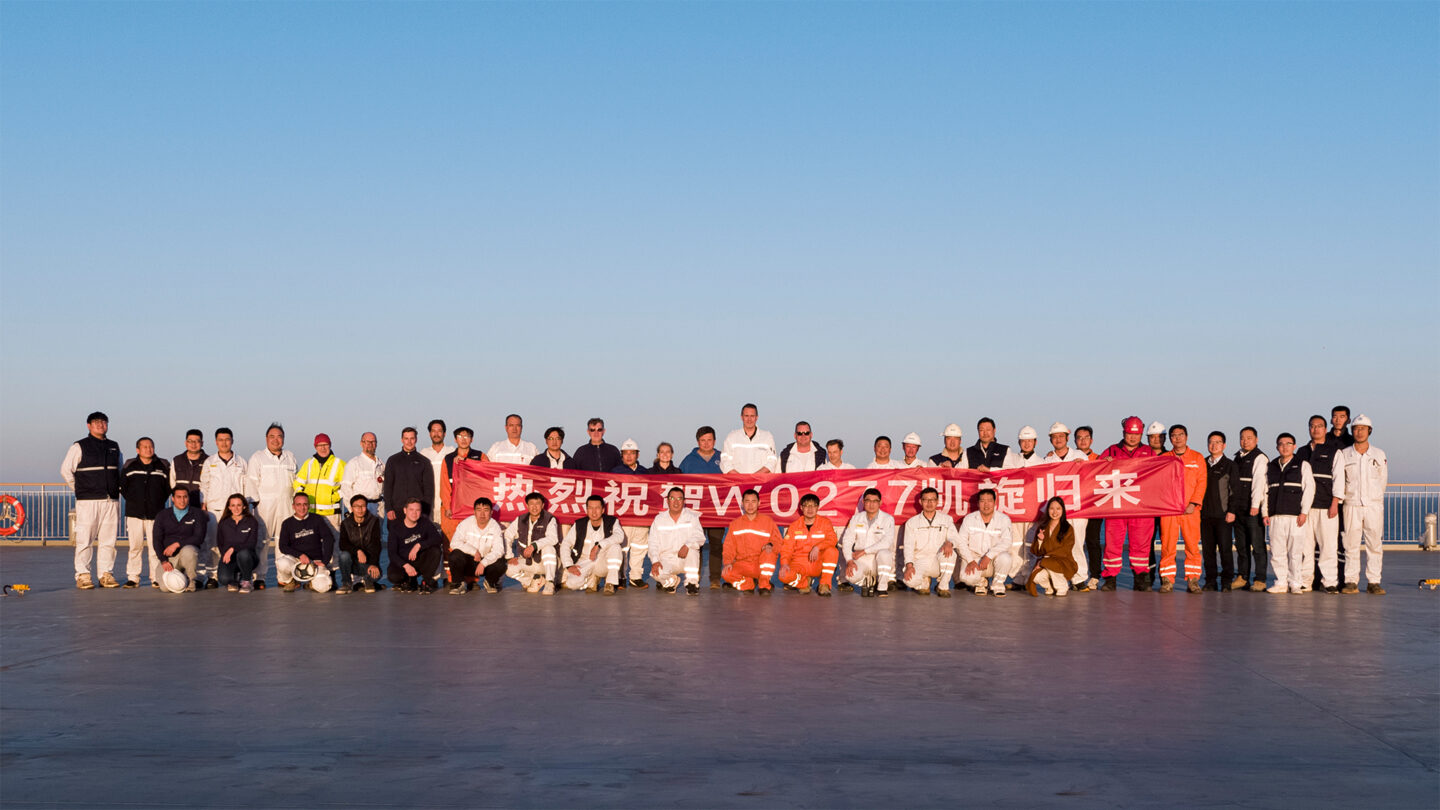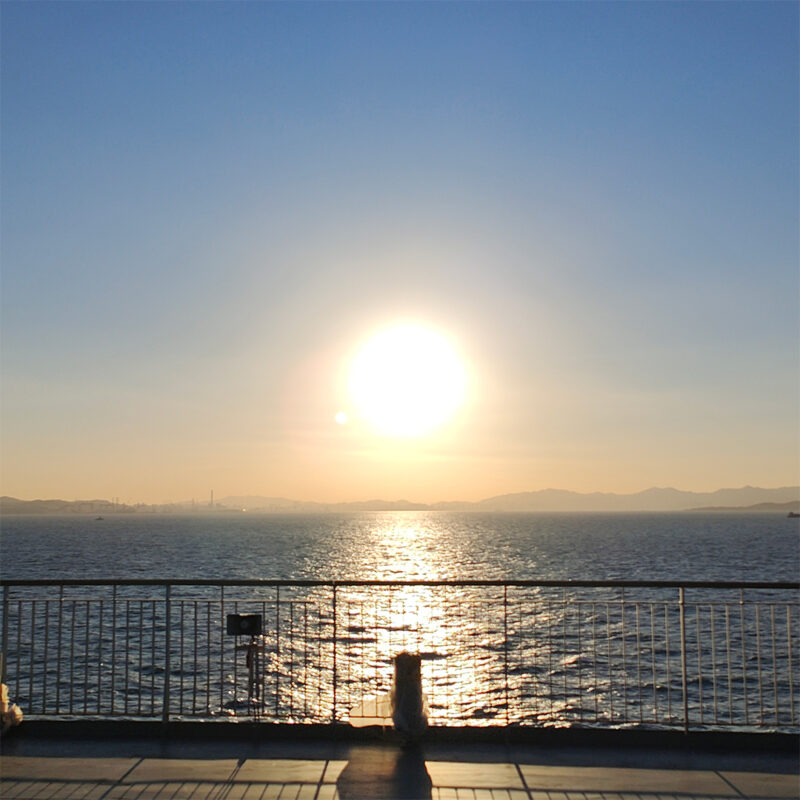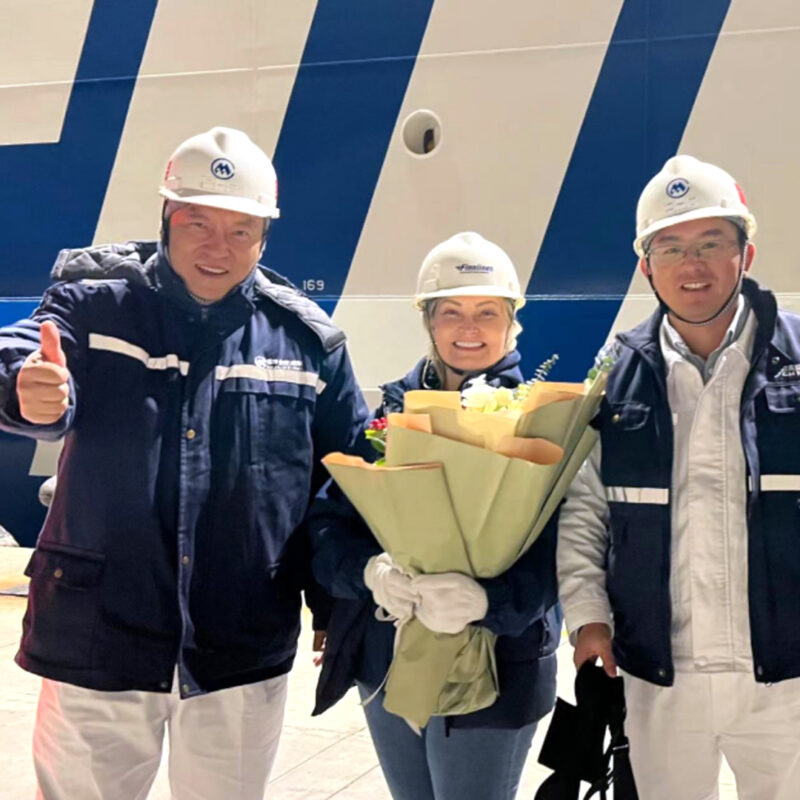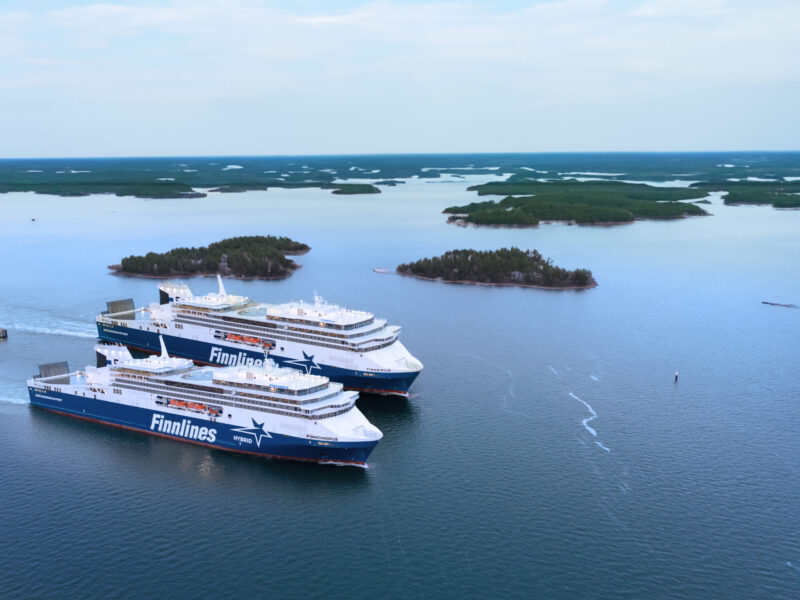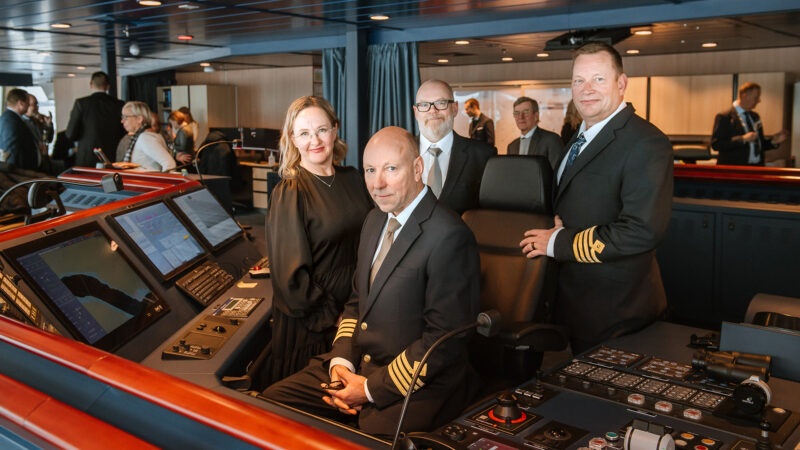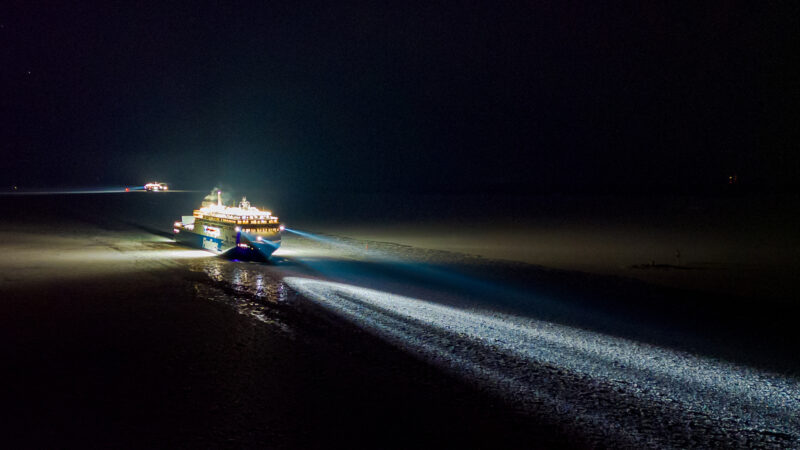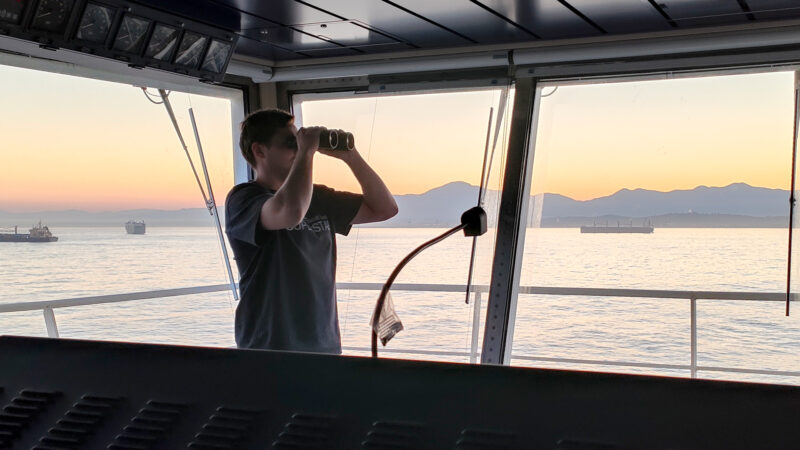Testing the Waters: The Finncanopus Sea Trial
As the dock time for Superstar vessels nears its inevitable end, another superstar, Finncanopus, highlights this chapter’s conclusion through its sea trial, which we are now presenting.
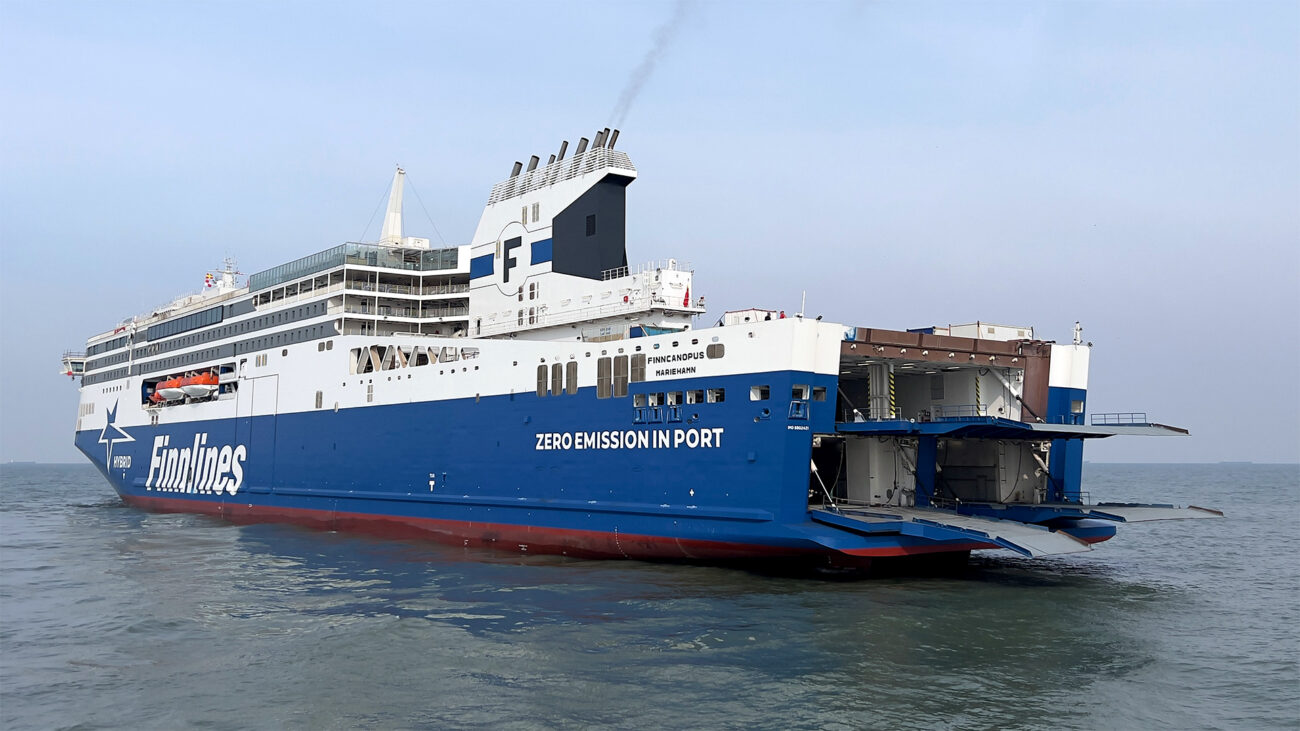
Those who have been following our blog may remember what a sea trial means, as we only recently discussed Finnsirius’s sea trial in June. The sister star, Finncanopus, embarked on its sea trial with almost the same testing program, though lessons had been learned from the previous time, at least regarding the amount of coffee loaded into the kitchen container – this time, there was enough coffee.
Execution of the Test Program
Finnsirius had conducted common performance-related tests for the Superstar class of vessels, such as various maneuver tests, so the test program for the Finncanopus sea trial was slightly shorter than that of its sister vessel.
From Weihai, departing from the CMI Jinling shipyard, the journey began in calm weather, which was favorable for the outdoor noise tests scheduled for the first day of testing. These tests were conducted with the cargo deck ramps open. Finncanopus stopped a short distance from the shore, but far enough away that the noise from the shipyard and the city did not affect the noise measurements. The cargo deck ramps were opened, and the external noise produced by the vessel was measured. This test is related to harbor noise regulations.
After the first day of testing, we had to wait for an autumn storm to pass, which slightly stretched the planned schedule for the sea trial. However, once the storm was over, we were able to resume the tests.
During the test days, similar to Finnsirius, a comprehensive test program was conducted. The exhaust gas scrubber was tested, and various speed tests related to fuel consumption were carried out. Additionally, open-sea anchoring was tested. The test program also included extreme situation simulations, a blackout test, and an unmanned engine room test.
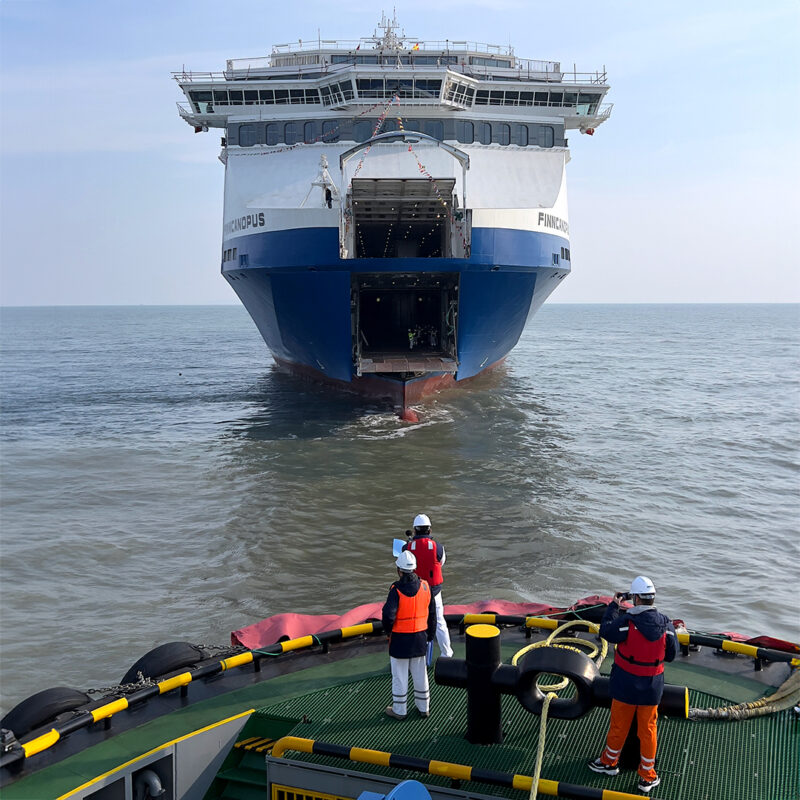
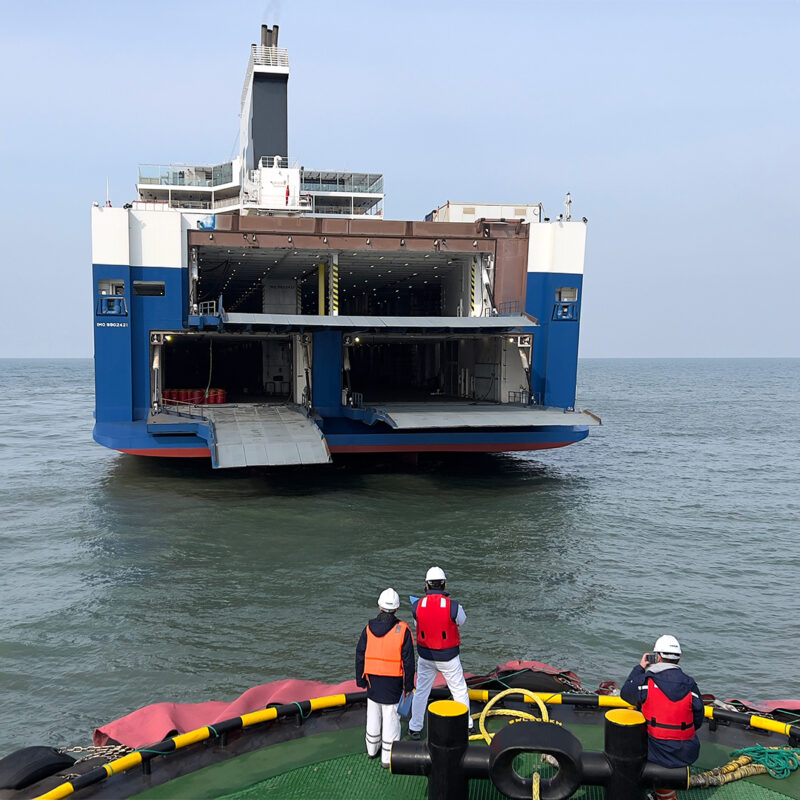
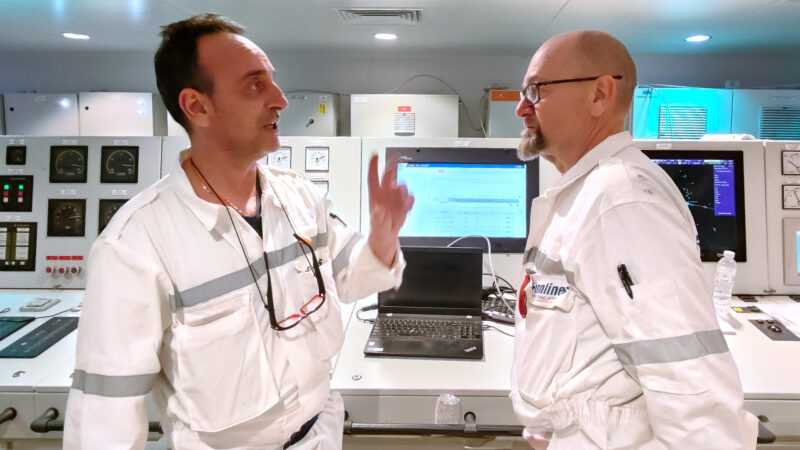
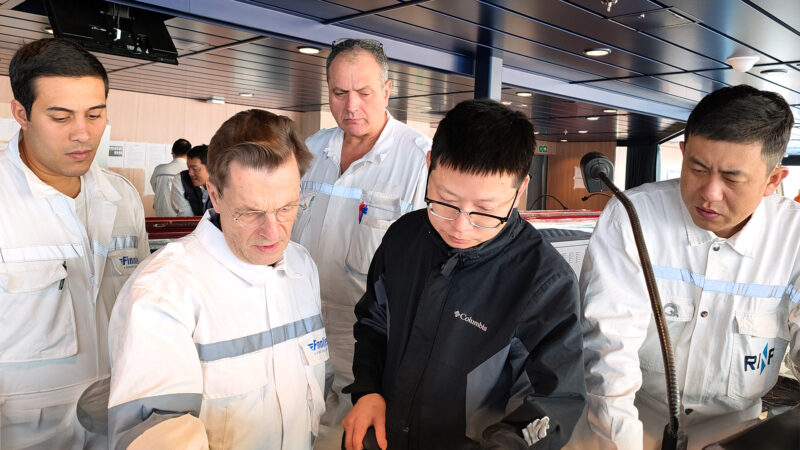
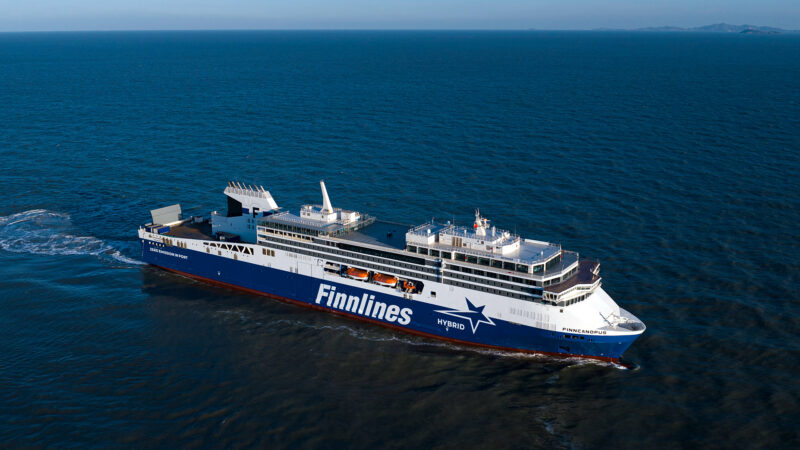
Unveiling the Intricacies of Ship Automation and Navigation
In addition to measuring the physical performance of Finncanopus, the sea trial also involved testing and adjusting the ship’s automation systems. In the crew meeting room, we met with the expert on the subject, Kalle Lindell, in front of the ‘mimics.’ Excuse me, what? Does this relate to pantomime? Not quite.
Kalle clarified what was currently in progress. On a large screen, the ship’s electrical system control picture, the ‘mimic,’ was displayed. This complex technical image depicted the operation of various ship systems using graphical symbols and images.
“Modern ship automation is a complex contraption,” Kalle summarized and devoted some of his time to our blog to explain what it’s all about.
Graphical visualization and information technology are also beneficial in the loading of the ship. Kalle took us to a workstation where he introduced us to an electronic loading computer developed by the Finnish company Napa Ltd. With this computer, the ship’s stability can be determined even before loading the cargo. The software is integrated into the ship’s automation system, from which it receives real-time data about the ship’s attitude, the levels in different tanks, or any potential leaks.
Napa has also supplied Superstar vessels with an electronic logbook, which saves time and reduces the chances of human error.
With Kalle, we also visited the outer deck to inspect the compass of Finncanopus, which underwent important calibration work during the trial voyage.
“The compass is an extremely simple instrument, familiar to everyone from school orienteering exercises,” Kalle reminded with a twinkle in his eye.
“The compass measures the angle of the Earth’s magnetic field relative to the ship, or more traditionally put, the ship’s compass direction. Because the ship is made of iron, the magnetic field distorts around the compass. The installation location, known as the standard compass bridge, is located outside above the main bridge. The installation site must be free from interfering magnetic objects and remain so throughout the ship’s lifetime. Changes should not be made there without a complete recalibration of the compass.”
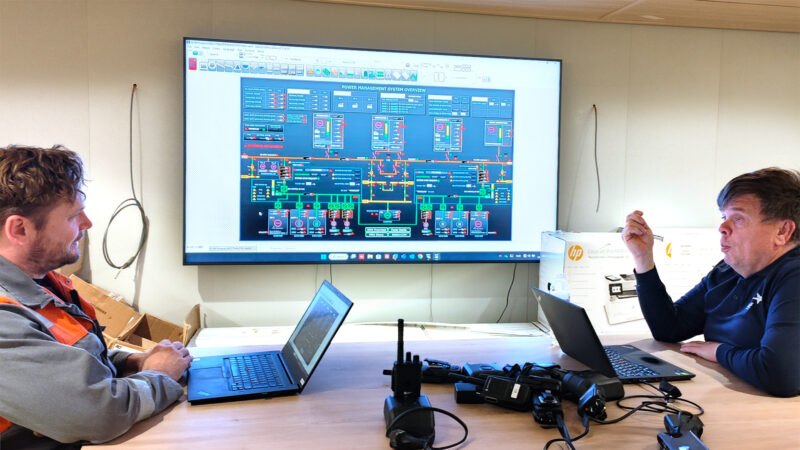
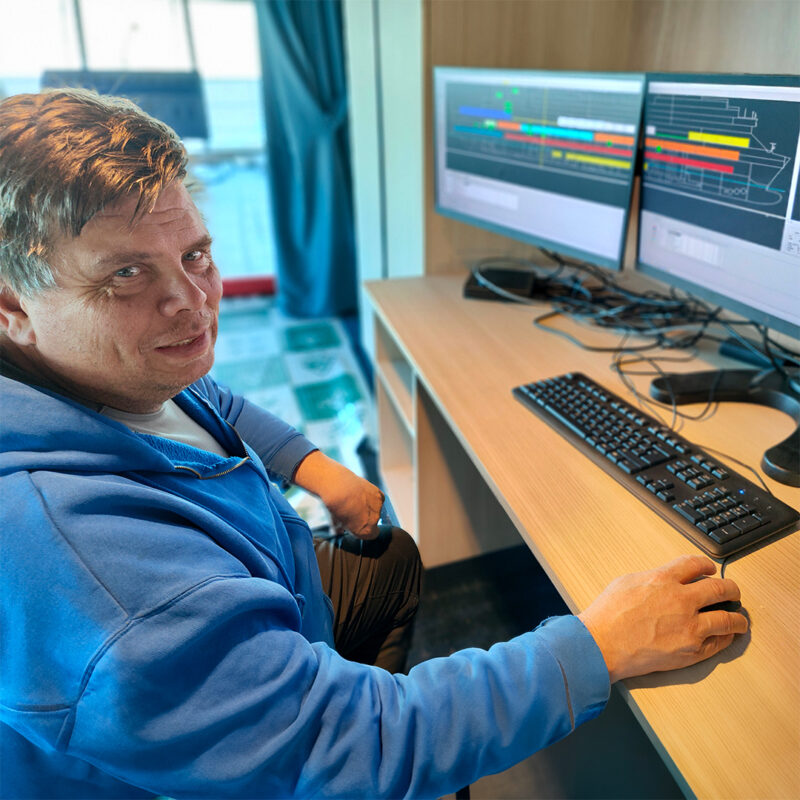
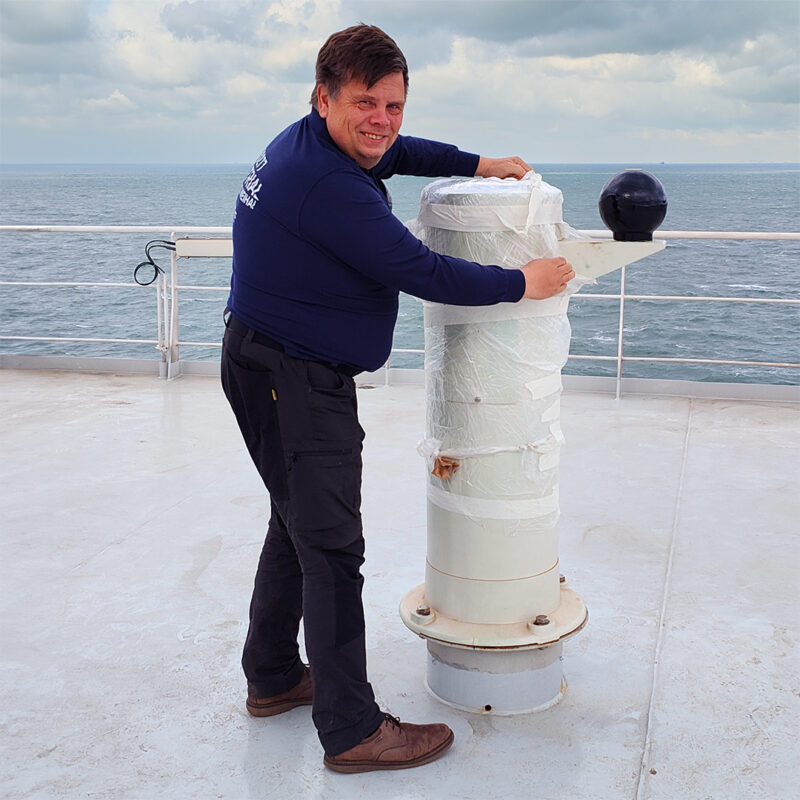
Additional Work During the Sea Trial
During the sea trial, installation work on the hotel side was also progressed. This included the installation of all cash registers, i.e., POS devices.
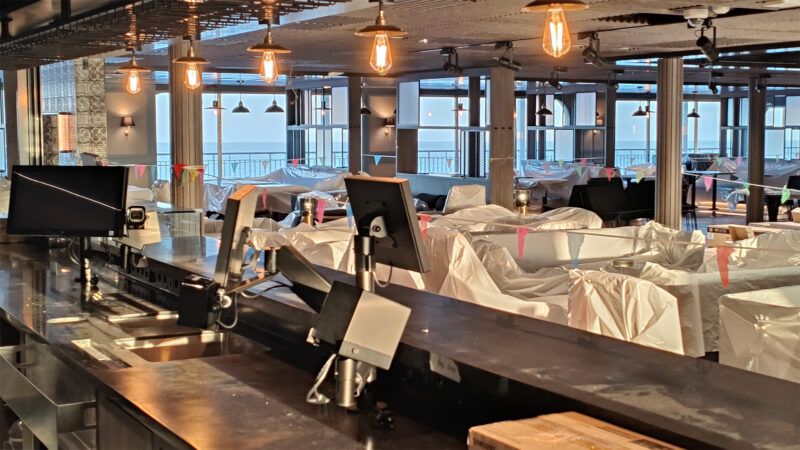
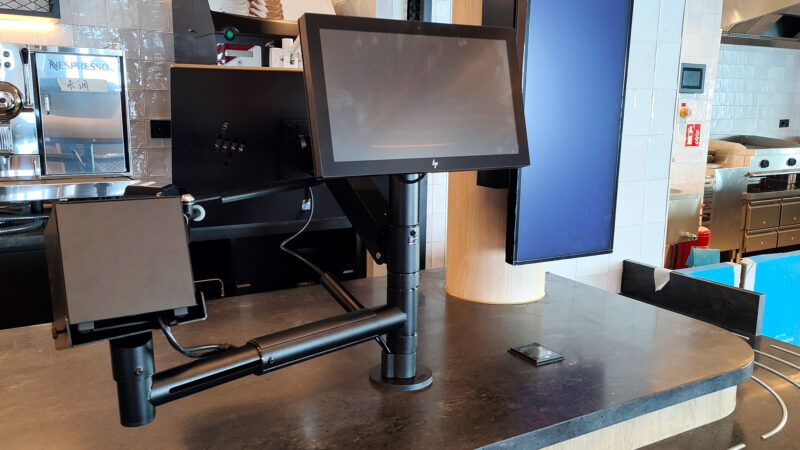
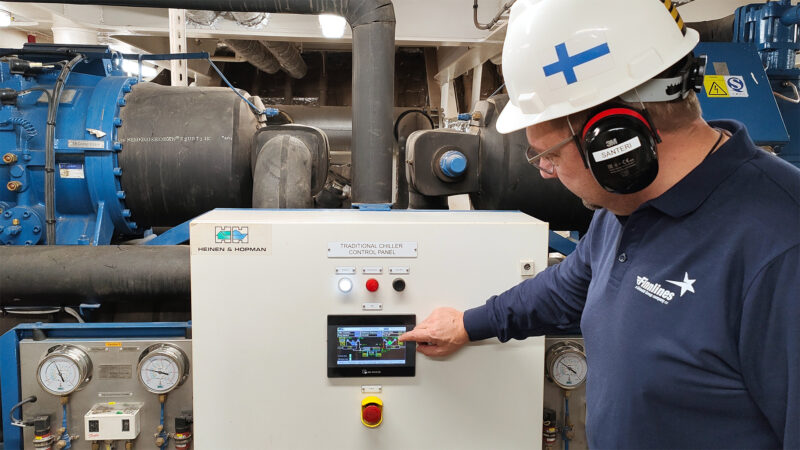
Back in Weihai
The storm delayed Finncanopus’s planned sea trial schedule by a couple of days, and the return to the Weihai shipyard was achieved on Sunday, November 19th. Next on the agenda is the final finishing work, which will take a few weeks. After that, Finncanopus is scheduled to begin its journey towards Finland, before Christmas.
